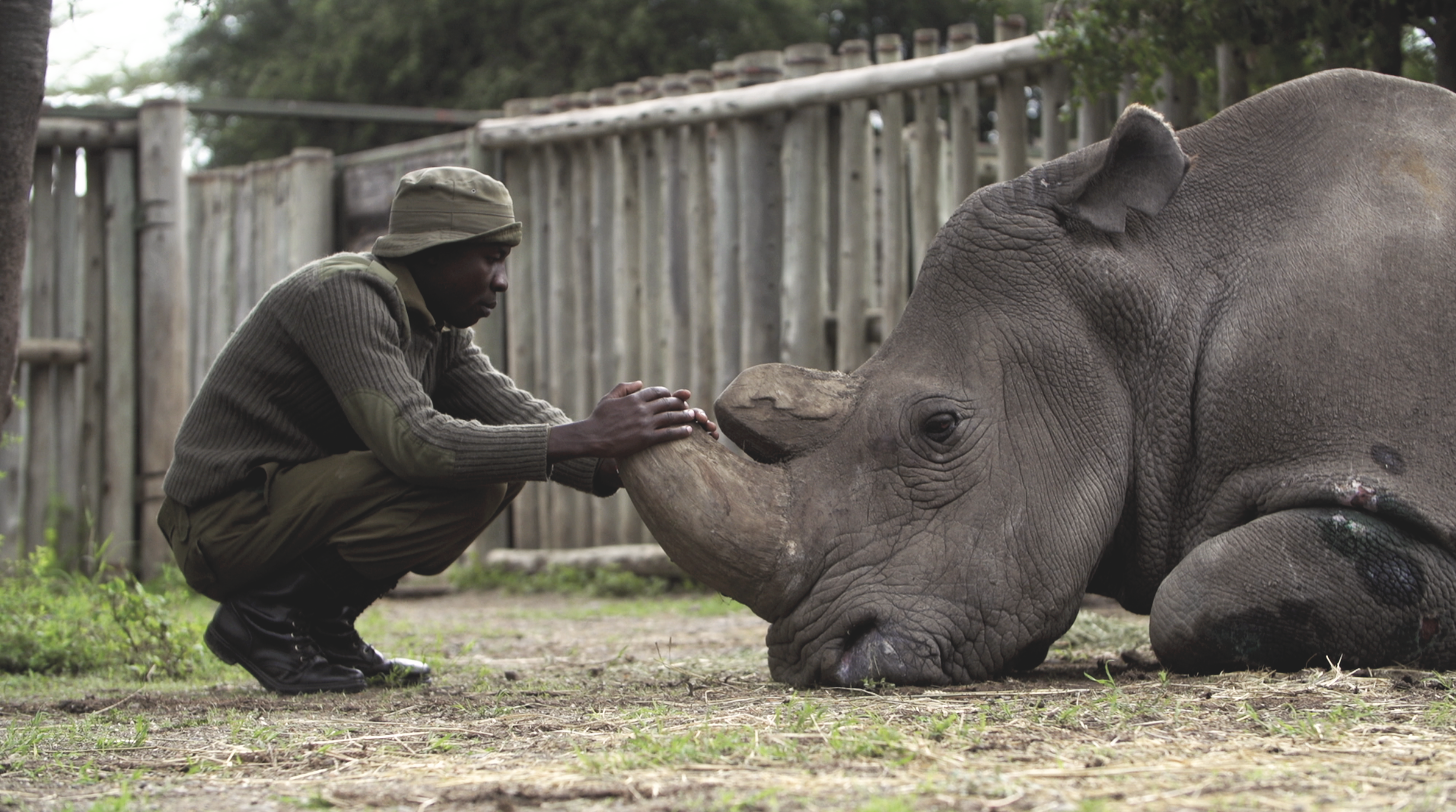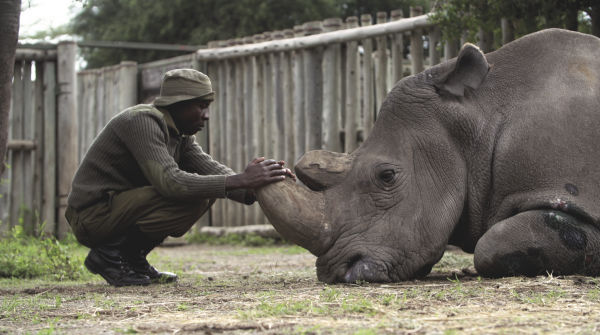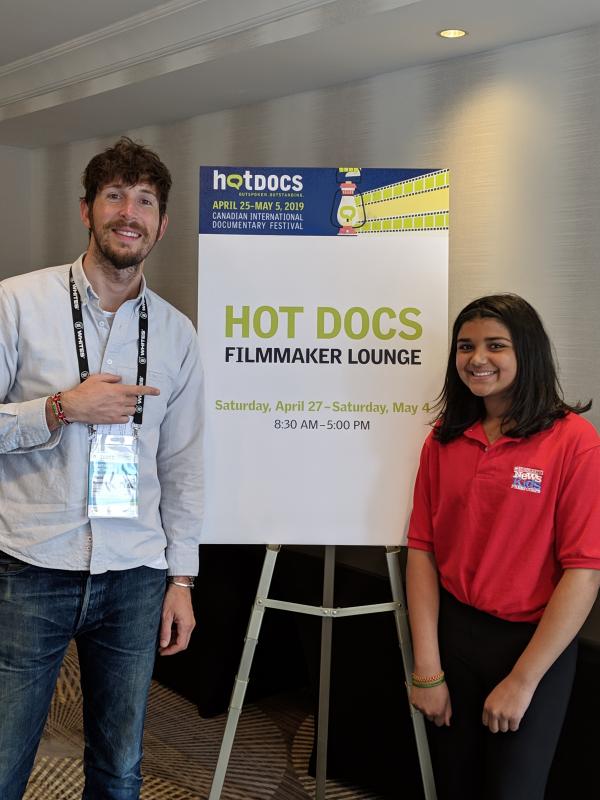KID REPORTERS’ NOTEBOOK
Protecting the Rhino


At a conservancy in Kenya, James tends to Sudan, a northern white rhino, in the final years of his life.
On March 19, 2018, the world lost Sudan, the last male northern white rhino. Sudan died at the age of 45, well above the life span of an average rhino.
A new documentary, Kifaru, tells Sudan’s story through the eyes of James, Joseph, and Jacob, his Kenyan caretakers. Kifaru, which means “rhino” in Swahili, was recently featured at the HotDocs 2019 Festival in Toronto, Canada.
Directed by David Hambridge, the award-winning film gives a human dimension to the urgent problem of extinction. Viewers are drawn into the world of the three caretakers and their love for Sudan.
“I saw the caretakers, the bond they had, and how strong it was,” Hambridge said. “I saw how much they loved giving Sudan mud baths, feeding him, sitting next to him, and talking to him.”

Nikita with film director David Hambridge at the HotDocs 2019 Festival in Toronto, Canada
“JOYS AND PITFALLS”
After witnessing the bond between Sudan and his caretakers, Hambridge decided to tell the story “in a way that was very human and relatable,” he explained. “I wanted people to be able to experience the joys and pitfalls of real conservation on the ground.”
From 1975 until 2009, Sudan lived at the Dvůr Králové Zoo in the Czech Republic. Later, he was moved with his daughter Najin and granddaughter Fatu to the Ol Pejeta Conservancy in Kenya. At Ol Pejeta, Sudan met the caretakers who would make his life comfortable and pleasant until the very end.
A PAINFUL END
Taking care of a rhino, especially the last of its kind, is no easy job. In Kenya, the role of a rhino caretaker does not earn much money or respect. Moreover, the caretakers had to spend 10 months out of the year away from their families. As James said in Kifaru, the job was “taking care of an animal that can never look you in the eyes and say, ‘Thank you.’”
When Sudan collapsed at the end, his caretakers had to handle a stressful situation before the medical team arrived. Ultimately, Sudan had to be euthanized because he was in so much pain.
It is hoped that Sudan’s death will not mean the end for northern white rhinos. Some of his DNA was frozen and can be used to create a rhino embryo birthed by a southern white rhino.

James says goodbye to Sudan.
SELLING RHINO HORNS
Rhinos are native to the grassy plains of eastern and southern Africa. Their horns sell for a lot of money, but there is a big misconception about how they come to the market. In places where the rhino horn is popular, people think that it falls off the rhino’s head.
What actually happens is devastating. To get the horn, the rhino has to be murdered.
According to Hambridge, our generation must recognize that poaching has to be stopped completely in order to protect endangered animals.
HUMAN GREED
The film comes amid alarming headlines about animal extinction. According to a new report from the United Nations, species of all kinds—mammals, marine life, and birds—are disappearing rapidly. As many as 1 million species are at risk of extinction due to human activity.
As caretaker James said about the rhino crisis, “Extinction is the definition of human extremes of greed.” Unless we act now, life on Earth could change dramatically.
